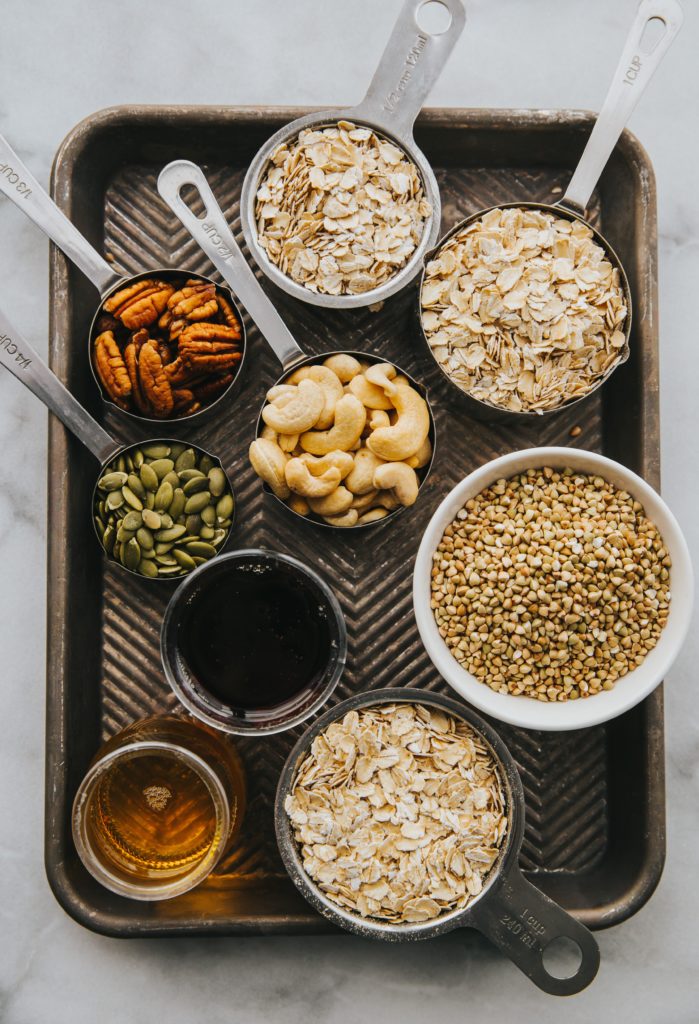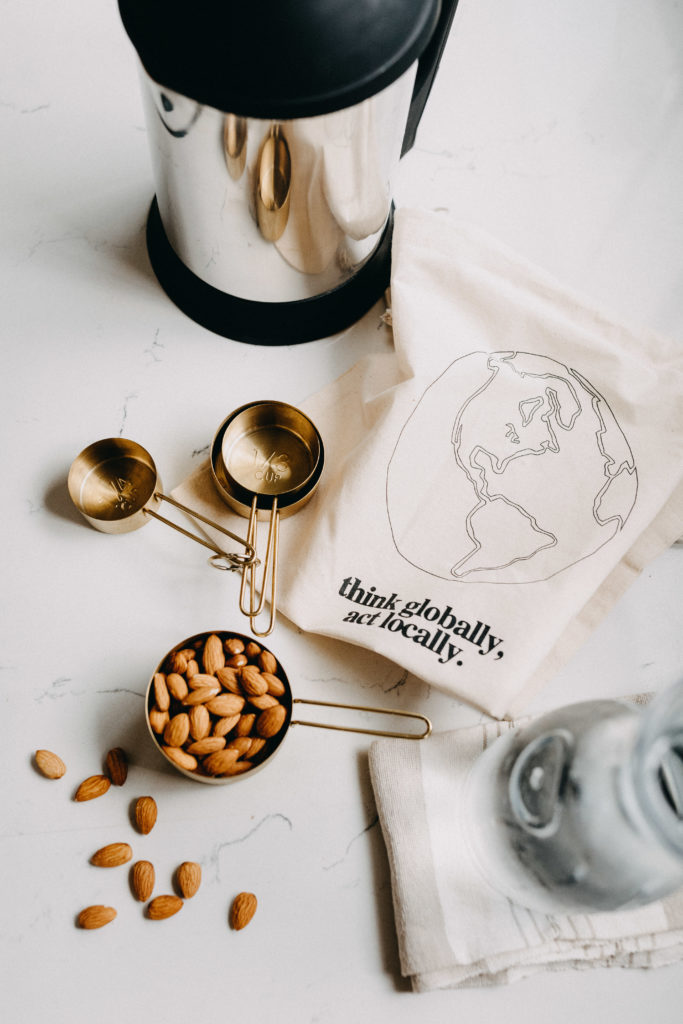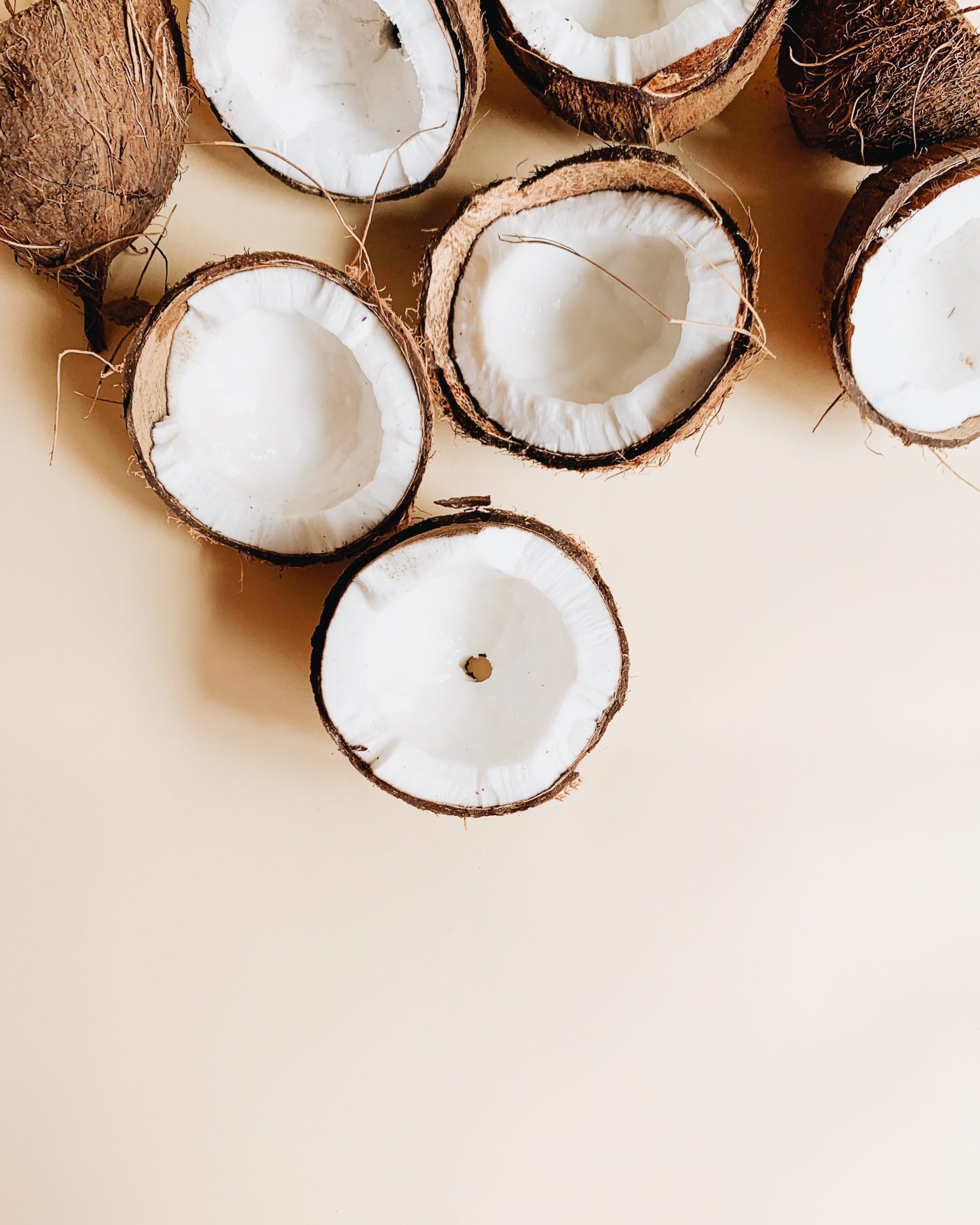Something I started doing a few years ago was making our plant-based milk at home. I have an Almond Cow machine that helps me do so in one minute! I share my simple, but impactful, process (and my discount code for you) below…

There are so many types of ‘milks’ that are common nowadays – almond cashew, oat milk, rice, coconut & even walnut! I prefer alternative nut / seed milk over dairy for several reasons: less waste, fewer chemicals, and overall better digestion.
For years I was buying almond or coconut milk in cartons (thought they were paper, turns out they’re lined in plastic! who knew!) and in the fall of 2018, I was looking for ways to cut down on our waste at home and decided I wanted to start making our dairy-free milk at home!
If you’ve thought about this idea before but didn’t know where to start or the concept seemed daunting to you — I completely understand and was in the same boat. Since then, it’s become a no-brainer part of my weekly routine and I absolutely love experimenting with different recipes!
Here is my beginner’s guide to make plant-based milk at home!
Why Make Alternative Milk at Home?
The biggest reason I started making plant-based milk at home was simply – waste. If you have explored any of my other articles, or my site at all, you know I am deeply passionate about reducing my negative impact on our land and oceans (and also helping others reduce theirs too).
51 trillion pieces of plastic are in the world’s oceans.
When I started doing an audit of the most common plastic waste we were creating, our milk cartons were high on that recurring list. Once I was conscious of it, I couldn’t help but feel guilty tossing them into the trash (Hawaii doesn’t recycle plastic, nor does any of the world really) so I sought out a solution and am really pleased with how easy this swap has become.
The second reason? The amount of chemicals and preservatives that are in the store bought plant-based milk to give it a longer shelf life. Did you know that some of the leading brands of store-bought almond milk only contain 2% of almonds? Ultimately what you’re paying for is water, sugar, carrageenan, sunflower lecithin, and the packaging. No thank you.
Reasons to make plant-based milk at home: less plastic waste, fewer chemicals, less expensive!

Almond Cow “Milk” Maker
If making plant-based milk at home sounds like a lot of work, I understand. I used to pat myself on the back when I made milk even once in a blue moon because of the process, the mess and the amount of time it took.
In December of 2018, I found the Almond Cow plant-based milk maker which completely changed the game for me! Now making milk is part of my weekly ritual because it’s so simple and fast to make plant-based nut/seed milks at home in just a few minutes.
You can use any nut, seed, or grain to make homemade plant-based milk — it makes 5-6 cups of fresh milk at the touch of a button and with no icky preservatives, chemicals, or waste!
Just because it’s called the ‘almond’ cow does not mean you can only make almond milk—the Almond Cow can make any type of creamer or milk you want and I share some of my favorite recipes below!
While it is an investment up front, I personally think it’s worth it and that it well beyond pays for itself in the long run.
Best Ingredients For Plant-Based Milk
You, like me, might be curious as to which ingredients for plant-based milks have the least negative environmental impact? Making the switch from dairy milk to an alternative is powerful in cutting down carbon emissions, but there are some other things to consider that go into making nut / seed milks: the amount of water, land, impact on the environment.
Almonds in particular are known to take a lot of water to grow so I usually shy away from them as they aren’t grown locally near us anyway. The most common type of milk I make is oat milk which has a smaller footprint than almond but all non-dairy alternative milks produce less emissions than cow’s milk—no matter if they’re made from beans, nuts, or seeds.
The important lens to look at this through is that everyone’s location, availability and connections are different and that we all have to make decisions that make sense for our unique circumstances. Buy local when you can, buy in bulk / plastic-free when you can, buy organic when you can.
At the end of the day, the goal is to cut down on waste and negative environmental impact in any way that we can.

Image courtesy of The Earthing Co Instagram
Quality of Ingredients
As with all things, the quality of ingredients is super important—especially if one of your reasons to start making your own milk at home is to avoid pesticides and other chemicals.
When we’re in Hawai’i, we love to buy locally grown nuts / seeds and often buy macadamia nuts from a friend’s farm. If you’re able to source your ingredients locally, I highly recommend supporting your local farmers (I talk about the importance of supporting local agriculture in this post about joining a CSA). When this is not available to us, I usually look for whatever organic and/or locally grown options they have in the bulk section of our health food store.
If you don’t have an option to buy in bulk locally, Almond Cow sells organic ingredients for an affordable price. I definitely recommend them as a source of bulk ingredients.

Easy Plant-Based Milk Recipes
Since having our Almond Cow, we have tried countless recipes and I’ll share a few of our favorites below. We source our ingredients locally whenever possible or shop for our ingredients in bulk. If neither of these are options for you, you can buy ingredients straight from Almond Cow.
On average, a batch of plant-based milk made at home only costs around 50 cents!
This is a wonderful money-saving opportunity.
Homemade Oat Milk
Ingredients
- 1 cup Soaked whole grain oats purchased in bulk
(soaked for at least 4 hours or overnight in the fridge) - ¼ tsp high quality sea salt
- Filtered water
Directions
- Whole grain oats are recommended because they are the least processed, most natural form of oats. Plus, they make the perfect oat milk! If you are following a gluten-free diet, be sure to purchase gluten free oats to avoid cross contamination with wheat.
- You don’t have to soak your oats if you’re in a rush but it’s recommended!
- When making oat milk it is recommended to use cold water in the base as any heat applied when making oat milk will create a slimy milk.
- Place oats the filter basket. Attach the filter basket to the top of the Almond Cow and twist in the direction of the close arrow to secure.
- Fill the Almond Cow base to the MIN line (5 cups) with cold filtered water, attach the top.
- Plug in the Almond Cow and press the cow start button!
It will run through 3 automatic stages. When the green light stops flashing, your milk is ready!
*Note: I add a pinch of high quality salt (like pink Himalayan sea salt) to the milk once it’s finished to bring out the nut flavor.
If you’d like to make this a bit sweeter, try adding pitted dates to the basket with the oats or adding 2 tablespoons of real maple syrup to the finished milk!
Now that you have this basic recipe, you can replicate it with other nuts or seeds.
My other favorites are pecan, hazelnut, hemp, cashew or macadamia nut
(because we can buy it locally from a farmer).
Almond Cow has an abundance of recipes to make different plant-based milks and utilize the pulp that’s leftover on their site! It’s a great resource for creating less waste and making yummy treats.

Overall
Making your own plant-based milk at home is less wasteful, less expensive and less harmful to the body – not to mention, it can be really satisfying to create whatever milk recipe tastes the best to you!
Hopefully you found all of this information on making plant-based milk at home helpful and that you’re inspired to make your first batch. This has been such a huge switch into more conscious & less wasteful living for me and has inspired countless other conversations, lessons and swaps in our household.
Have you made any alternative milks before?
If so, I would love to hear about your experience and try your favorite recipes!




















Read the Comments +
add A comment